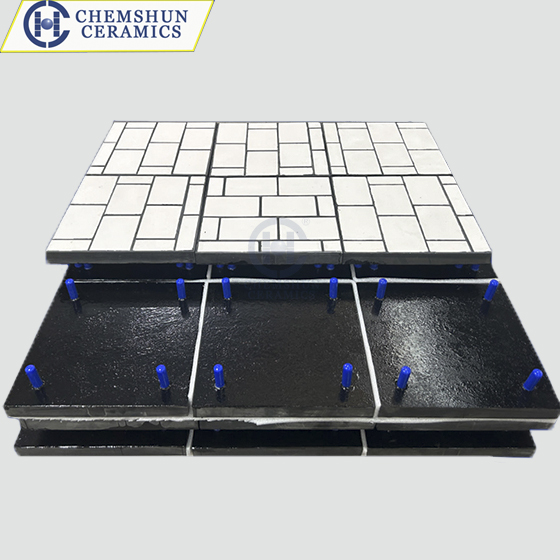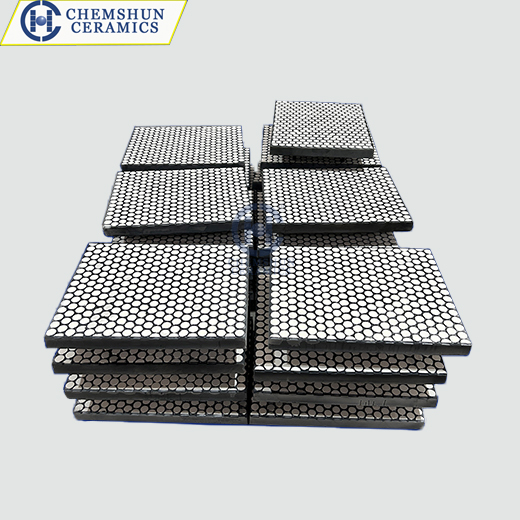In the field of industrial wear resistance, traditional single-material solutions are no longer sufficient to meet the complex requirements of high wear and strong impact in various working conditions. The rubber-ceramic three-in-one composite plate, as a revolutionary solution, has achieved a breakthrough in material performance through a three-layer composite structure design: the ceramic layer resists wear, the rubber layer absorbs impact, and the steel plate provides support. This composite wear-resistant material is now widely used in heavy industries such as power, mining, and metallurgy, and has become one of the core technologies for extending equipment lifespan and reducing maintenance costs.
The rubber-ceramic three-in-one composite plate is composed of wear-resistant ceramics, rubber and metal steel plates. The ceramic layer mainly uses high-purity (92%, 95%) alumina powder as the raw material, which is formed by dry pressing or isostatic pressing. After being sintered at an ultra-high temperature of 1700°C, a dense structure with a Mohs hardness of 9 and a density of ≥ 3.65 g/cm³ is formed. Then, the alumina wear-resistant ceramic and the rubber layer are laminated and placed in the mold. A vulcanization reaction (140-160°C) is carried out under high temperature and high pressure. The rubber molecules form chemical bonds with the ceramic surface. Before vulcanization, a steel plate is laid on the rubber, and the three layers are solidified through secondary vulcanization.
The rubber-ceramic three-in-one composite plate, with its outstanding performance, can be applied in the following scenarios:
1. It can be used in high-wear material processing systems, such as the hopper of a mining crusher or the sintering chute of a steel mill. It can withstand the erosion of sharp materials like iron ore and quartz sand, and its service life is more than five times that of ordinary steel plates.
2. Suitable for scenarios prone to moisture and slipping, such as coal conveying drum of port and dock conveyor belts, and belt conveyors in food processing plants. The ceramic particles in the rubber-ceramic three-in-one plate provide high friction force. The wet slip resistance coefficient is ≥ 0.5, preventing the materials from slipping.
3. It is suitable for use in high-temperature and corrosive environments, such as the hot-rolling conveying line in steel mills (red steel billets at 200℃), and acid-washing tanks in chemical plants. Heat-resistant rubber and inert ceramics can effectively prevent heat conduction and chemical erosion.
4. For areas with significant drop differences, such as coal discharge pipes in thermal power plants (with a drop difference of over 20 meters) and raw material silos in cement plants, wear-resistant ceramics are used to disperse the impact force, and rubber layers are employed for shock absorption to prevent the wear plates from cracking.
From the mines to the ports, from the steel mills to the power plants, the rubber-ceramic three-in-one composite plate has redefined the industrial wear resistance standard with a triple protective structure. Its value lies not only in its 10-year lifespan (exceeding traditional materials by 3-5 times), but also in the significant cost savings achieved by reducing downtime and maintenance. With the infusion of new materials and intelligent processes, this composite technology will continue to drive the evolution of heavy industrial equipment towards higher durability, lower energy consumption, and maintenance-free features.
Post time: Jul-14-2025



